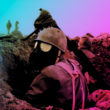The role of NGOs in addressing concerns about neuroscience
By Christopher Green, October 29, 2008
In their initial essay, “The Security Impact of the Neurosciences,” Margaret Kosal and Jonathan Huang raised four questions:
- What are the implications of security-related applications of this research?
- What impact will this research and its applied technologies have globally?
- What international regimes could regulate the dual use or potential misuse of these technologies?
- Will international regimes develop as a result?
When this discussion began, I thought I understood my thinking on these subjects, but throughout the past several months I’ve changed my mind in small, but important ways. Interacting with my fellow discussants has sensitized me to the many ways that we agree on these subjects. But I’ve also learned that all of us underestimate the pace of global change in neuroscience and the way that applications are emerging before the underlying science is understood.
What to do about this? I was initially convinced that the pace of neuroscience research would outstrip the ability of any government-centric international regime to regulate it. Arms control models are ponderous and largely disconnected from international bodies that can modulate or influence rates of research. Yet, I now realize that nongovernmental bodies, such as international professional forensic regimes, can accomplish these goals. This makes sense considering how neural imaging systems have become accepted methods of detecting deception independent of Western legal ethics and largely without the technology having undergone traditional scientific peer review. People have been convicted and sent to jail in India, China, Australia, Singapore, and Thailand on the basis of evidence garnered using neuroscience technologies that have few scientific and ethical underpinnings. In addition, mainstream hospitals around the world now prescribe a range of unproven treatments–such as applying neural stem cells to inflamed, traumatized spinal cord and neural tissues–and drugs for neurological conditions such as ALS and Alzheimer’s. Even Olympic athletes have used off-label neuropharmaceuticals and neuro-“neutriceuticals,” according to regular news reports.
The international regimes that are most likely to recognize and adapt to these unexpected challenges and to “control” these applications of neuroscience–deception detection, neuroimmunology, neural stem cell application, and the development of neural performance enhancing drugs–will be in the private and commercial sectors. Case law will regulate the application of cognitive imaging; patients are likely to continue heading overseas to treat spinal injuries; and clinical results, not laboratory research, will determine whether treatments gain traction. The emergence of the fringe pharmaceutical industry, which creates off-label and non-label performance enhancing drugs, will lead to new nongovernmental regimes that focus on testing and evaluating athletes.
So how do these trends affect our understanding of Margaret and Jonathan’s questions? The initial implications of neuroscience research have been non-military, and they have been related to forensics and private-sector activity. In general, the impact has been felt most acutely in legal and medical circles, not on the battlefield, and have thus engaged nongovernmental organizations, such as international sports authorities, and pseudo-experts as neuro-witnesses. Beyond these lay forensic medical regimes, the systems most likely to govern the emerging medical uses of neuroscience are clinical referral and medical practice databases, a form of regulation that eliminates unsuccessful treatments over time.
Each area of concern I’ve raised in this discussion is complicated and rapidly changing, and science has not yet organized and analyzed research data to address each appropriately. We hear about them most often in news reports and personal anecdotes. Despite this, they are real enough to worry about. And the issue of greatest ethical interest and concern is that many neuroscience applications are being driven by nonscientists. An important next step would be for scientists who are doing neuroscience research to engage these parties more directly.
Topics: Biosecurity
Share: [addthis tool="addthis_inline_share_toolbox"]














